The markets that Melissa Ver Meer’s companies service could not be more varied, from screen printing to commercial food equipment to ovens and dryers for industrial manufacturing.
 Melissa Ver MeerHowever, one consistent feature of the various markets that HIX Corporation sells to is that Ver Meer knows she must have an extremely durable coating applied to all the machines, parts, and components.
Melissa Ver MeerHowever, one consistent feature of the various markets that HIX Corporation sells to is that Ver Meer knows she must have an extremely durable coating applied to all the machines, parts, and components.
“I started in the control valve world, so material selection and finishes were important because they were in a lot of heavy industrial applications,” she says. “It was anything from power plants to pulp and paper mills to chemical operations; it was just a variety of whatever you could throw at it. We were trying to keep the control valve running, which was similar in the oil fields. You're just trying to get things to survive in these oil wells.”
Switch to Powder Coat Finish
This is why the HIX management team recently switched from liquid to powder coatings to finish their products in all the fabrication they perform at their Pittsburg, Kansas, headquarters.
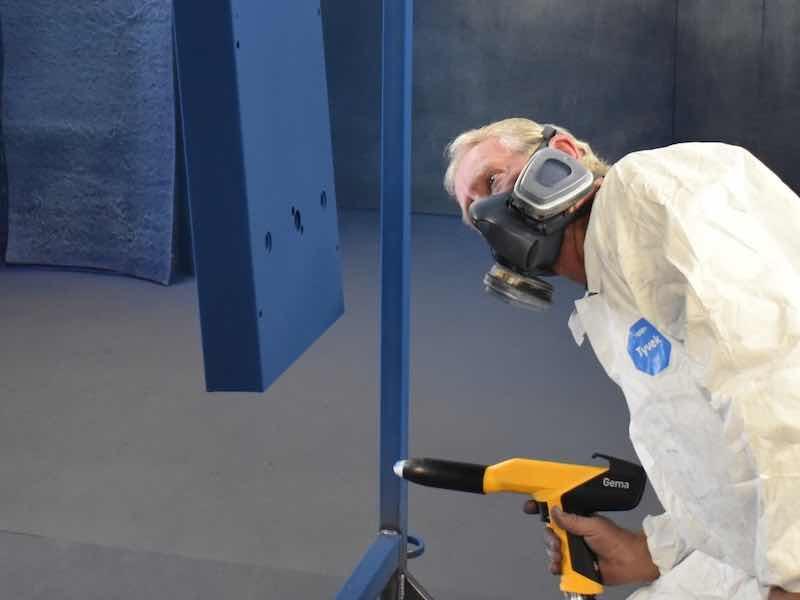 HIX management team recently switched from liquid to powder coatings to finish their products in all the fabrication they perform at their Pittsburg, KS, headquarters.Ver Meer says the transition marks a significant step in enhancing product durability, environmental sustainability, and color customization options.
HIX management team recently switched from liquid to powder coatings to finish their products in all the fabrication they perform at their Pittsburg, KS, headquarters.Ver Meer says the transition marks a significant step in enhancing product durability, environmental sustainability, and color customization options.
“Our equipment is designed to last a long time,” she says. “We've been known for high quality, and paint is one of those qualities, especially on the HIX imprint side where it can be a vulnerability. We want the products to look good, but we also want them to be protected, and powder coat as an option for those products was highly desirable.”
HIX is a global producer of various machinery and products:
- Heat transfer and screen-print equipment for the graphic printing industry in a division known as HIX Imprint.
- Dough and meat presses for the commercial food service business using the doughXpress brand.
- Ovens and dryers for industrial manufacturing operations.
110,000-SF Manufacturing Facility
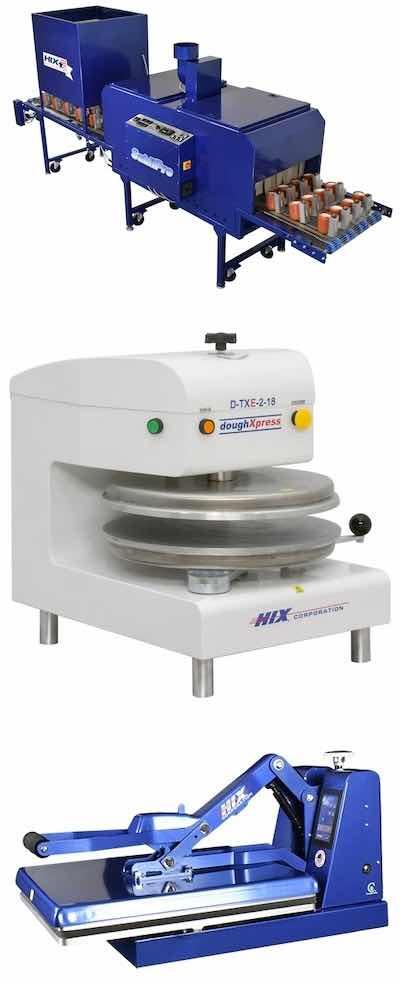 HIX manufacturers ovens and dryers for industrial manufacturing operations (top photo), dough and meat presses for the commercial food service business (middle), and heat transfer and screen-print equipment for the graphic printing industry.
HIX manufacturers ovens and dryers for industrial manufacturing operations (top photo), dough and meat presses for the commercial food service business (middle), and heat transfer and screen-print equipment for the graphic printing industry.
HIX has numerous product designers, engineers, production specialists, and finishers working in a 110,000-square-foot manufacturing facility. They perform their fabricating and production, including an integrated permanent mold aluminum foundry, CNC mill operations, welding, CNC metal forming, wiring, fabrication, assembly, coating, and packaging departments.
Dan Boley, HIX’s Director of Manufacturing Operations, says the decision to adopt powder coating was driven by several key factors, including the superior durability and resistance properties offered by powder coat finishes compared to traditional liquid paints.
But importantly, the throughput of powder-coated parts was far superior to that of liquid coatings.
“With the paint system, it normally takes us a full day and a half by the time you paint and let it set,” Boley says. You can't touch it until the following day. With the powder system, we can turn around a part in 45 minutes to an hour compared to waiting almost a full day.”
Given all the improvements in corrosion resistance and durability, the speed of the process made the transition a no-brainer for HIX.
“The throughput is very significant,” Boley says. “If a special order comes through for a color variation from our standard, literally in an hour and a half, we can have that ready to go to the line as long as we have the raw material ready.”
Enhanced Protection Against Corrosion, Chemicals, and UV Rays
Phil Ward, HIX's Engineering Manager, helped oversee the integration of the powder system. Powder coating provides enhanced protection against corrosion, chemicals, and UV rays, ensuring that HIX products maintain their aesthetic appeal and functionality over extended periods of use.
Ward says HIX invested in all new equipment, including a 10 x 10 x 20 Kool Koat oven from Columbia Coatings and a Gema OptiFlex Pro coating system. The oven, assembled on-site, provides precise temperature control and ensures uniform powder coat curing, resulting in consistent and high-quality finishes across all product lines.
“We manufacture and design conveyor ovens and some batch ovens here, so initially, we looked at the feasibility of whether we want to design our oven,” Ward says. “We had not in the past made ovens of this physical size, and there was going to be a lot of engineering work done to create the design, prints, drawings, and so forth to manufacture it here. Not that we couldn't, but our engineering load was being used elsewhere then.”
“We're able to hold plus or minus 5 degrees Fahrenheit throughout the whole chamber, which exceeded my expectations,” Ward says.
Still, HIX engineers played a big role in helping design the oven and drying system to meet the specifications they knew they needed to run the system at optimal levels.
“We are very knowledgeable about oven design since it has been one of the primary products we've been making since the 1960s,” Ward says. “There's a lot of legacy information and design information that we had, so we knew about airflow, and we've used CFD to design many of our products here.”
Proper Airflow Distribution to Reduce Temp Variation
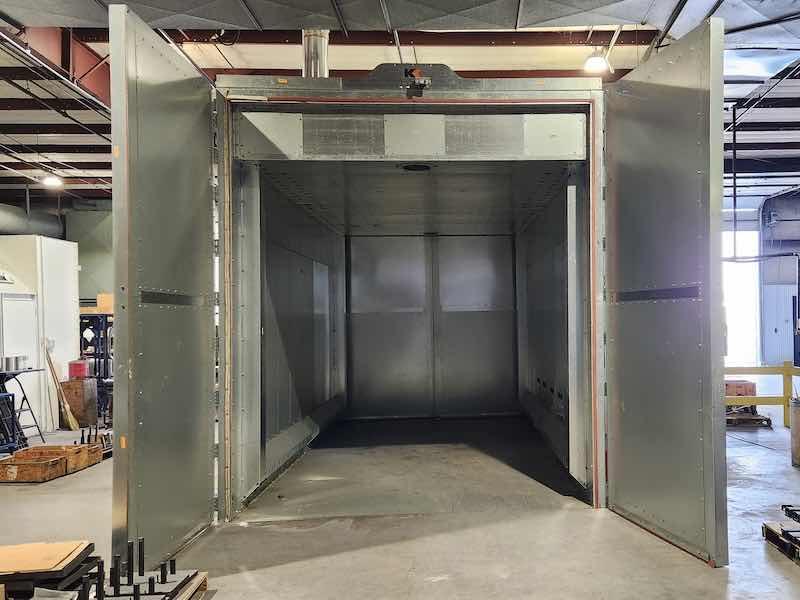 HIX worked with Columbia Coatings on their Kool Koat oven and helped design the airflow to give them the desired result and yield.For example, the HIX engineers were very aware of the importance of airflow distribution and ensured no temperature variation in the oven chamber. As Ward and his engineering team began looking at suppliers and contractors who supplied ovens, they realized that many would not meet the specs they requested.
HIX worked with Columbia Coatings on their Kool Koat oven and helped design the airflow to give them the desired result and yield.For example, the HIX engineers were very aware of the importance of airflow distribution and ensured no temperature variation in the oven chamber. As Ward and his engineering team began looking at suppliers and contractors who supplied ovens, they realized that many would not meet the specs they requested.
“Some of them weren't designed very well,” he says. “Just by looking at how they were handling airflow was not, in our experience, something that will work very well.”
They began working with Columbia Coatings on their Kool Koat oven and helped design the airflow to give them the desired result and yield. Ward says the oven “doesn’t have a whole lot of bells, whistles, and frills,” but it does have plenty of human-machine interface (HMI) controls that give the system plenty of power and functionality.
“We're able to hold plus or minus 5 degrees Fahrenheit throughout the whole chamber, which exceeded my expectations,” Ward says. That's a really tight tolerance to try to hold—and they don't advertise that—but in our internal testing here with a 12-channel recorder, I could put thermocouples throughout that oven, which yielded that. I was very pleased and surprised.”
“The training curve was fairly simple, about a one-day training. Our paint crew is knowledgeable about the overall coating process, but a few tweaks and you learn by going through the process and doing it. Within a week or so, our team was very efficient at it.”
The airflow was important because HIX has many parts of different sizes that need to be coated and cured, so much of the work will be racked. With doors on both ends of the 20-foot-long oven, they can pass through larger parts if needed and get the desired thickness on the coated components.
“Because we deal with many different sizes of parts, we use many different thicknesses of materials,” Ward says. It’s anywhere from 20 gauge sheet metal to a half-inch steel, plus many little parts, linkages, frames, and sheet metal parts. And there are cure schedules for each of those different masses of parts; we need to be accurate to have no problems.”
Additional Powder Coat Color Options
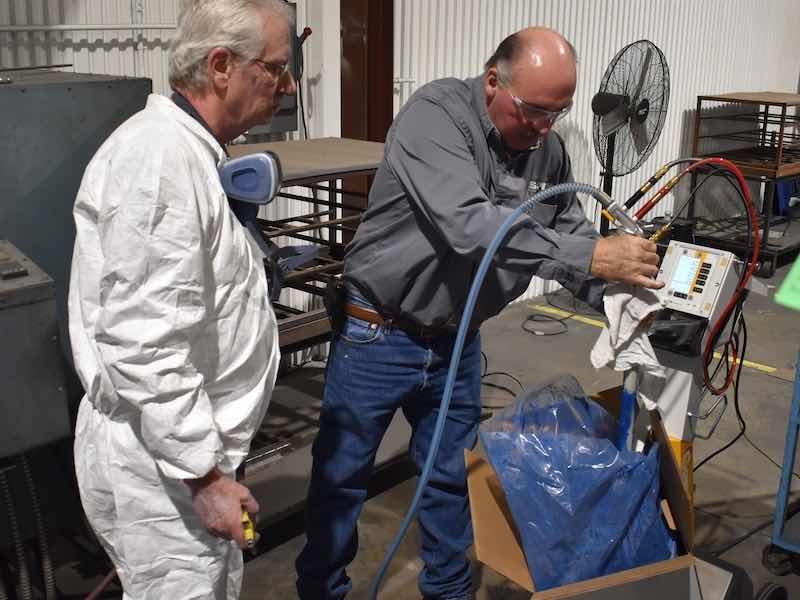 HIX currently uses two basic colors in their powder coating process, but the Gema OptiFlex system gives them several different options if that changes. Boley says they currently use two basic colors in their powder coating process, but the Gema OptiFlex system gives them several different options if that changes. They are also cautious about using different colors due to National Sanitation Foundation (NSF) regulations regarding coatings for food industry products.
HIX currently uses two basic colors in their powder coating process, but the Gema OptiFlex system gives them several different options if that changes. Boley says they currently use two basic colors in their powder coating process, but the Gema OptiFlex system gives them several different options if that changes. They are also cautious about using different colors due to National Sanitation Foundation (NSF) regulations regarding coatings for food industry products.
However, the HIX team took advantage of the versatility in color customization while modifying its brand colors to align with its new vision for the company. Additionally, they say the powder coat offers a vast array of Pantone Matching System (PMS) options, allowing HIX to precisely match customer specifications and deliver personalized products with unmatched color accuracy.
Boley says his coatings team quickly adapted to learning the powder coating system and spray gun techniques from that of liquid coatings.
“The training curve was fairly simple, about a one-day training,” he says. “Our paint crew is knowledgeable about the overall coating process, but a few tweaks and you learn by going through the process and doing it. Within a week or so, our team was very efficient at it.”
HIX was founded in 1963 by two brothers who began in the screen printing and apparel decoration industry. They soon became involved with heat transfer presses, which eventually morphed into dough pressing.
“It is the same basic technology used in the apparel and garment industries and commercial food equipment,” Ver Meer says. “They are completely different markets, but they use similar technologies.”
Varied Career Path Leads to Ownership
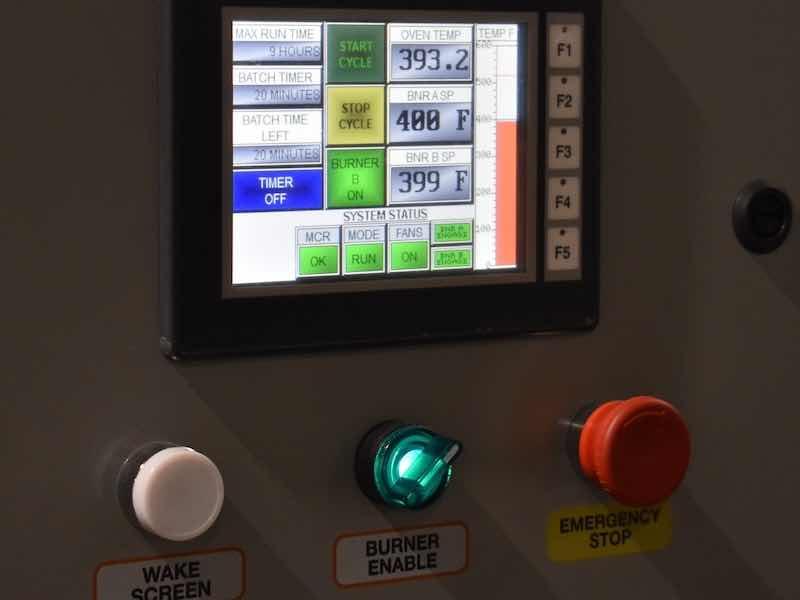 The oven has controls that give the system plenty of power and functionality.Ver Meer’s path to ownership of HIX Corporation has also been varied.
The oven has controls that give the system plenty of power and functionality.Ver Meer’s path to ownership of HIX Corporation has also been varied.
She worked as a Materials Engineer and an Applications Engineer at Emerson Process Management from 1999 to 2003. She also gained research experience as a Research Assistant at Ames Laboratory from August 2000 to December 2002.
Ver Meer worked at Schlumberger — a technology company focused on decarbonization — from 2003 to 2012 as a Materials Engineer, a Senior Engineer, and a Polymer Engineering Manager.
In 2012, she joined the U.S. Department of Energy’s Kansas City National Security Campus, a manufacturing facility that provided diverse engineering, advanced manufacturing, and secure sourcing services for national security. Ver Meer started as the Technical Manager for polymer research and development in Materials Engineering at KCNSC and then became a Senior Technical Manager for engineering in Nuclear Weapon Programs and Global Security, focusing on technology and product maturation.
Ver Meer left KCNSC as the Principal for Enterprise Partnerships in Strategy and Transformation in 2020 to found and direct Prairie Fire Partners, a privately held investment firm she formed to pursue her dream of owning and operating a small manufacturing business in the Midwest.
“I've been in manufacturing my entire career,” Ver Meer says. “Each stop was a different manufacturing element, from control valves to wire and cable and eventually national security manufacturing.”
U.S. Manufacturing is a National Security Issue
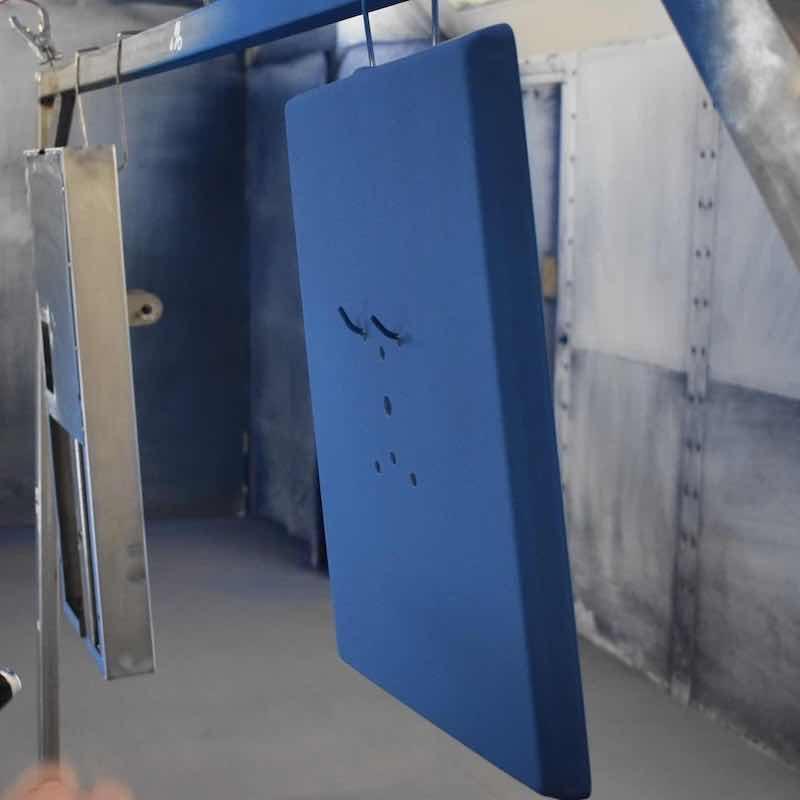 She says that along the way, she quickly saw how U.S. manufacturing was a national security issue, which drove her to want to own her own company.
She says that along the way, she quickly saw how U.S. manufacturing was a national security issue, which drove her to want to own her own company.
“The desire to acquire a company was born out of that,” she says. “I'm seeking to do this long term, but I put a five-year plan together and exited in 2020.”
She acquired HIX in January 2023, right after supply chain issues rocked the U.S. manufacturing sector. Van Meer says that having worked in the defense side of manufacturing for so long, she and her colleagues had been worried about supply chain issues for years, but not many companies were worried about them.
“It suddenly became very important to everyone in 2020 and 2021,” Ver Meer says. “You got these huge supply chain disruptions, and suddenly, these long supply chains that extended overseas started to fracture. So you wanted to look at domestic supply and saw a bubble form in several different elements.”
After acquiring HIX in 2023, Ver Meer says she is not done yet. They recently acquired a company in Dallas, Texas, called Quik N Crispy, a commercial air fryer. That company complements the other commercial food products they already own.
“We've doubled down on the commercial food equipment side,” she says. “We are bringing air fryer operations to our Pittsburg [Kansas] facility.”
Becoming More Efficient Operationally
That is why it was so important for Ver Meer and the HIX team to examine their operational efficiency. They may continue to acquire similar companies and incorporate them into the mix at the Kansas manufacturing location.
“We made an effort to reconfigure our manufacturing layout and look at processes that would speed up and optimize our operations,” Ver Meer says. “Powder coat was identified as one of those operations fairly early on.”
While the planning and integration of adding a powder coating system were extensive, Ver Meer credits Ward and the other HIX engineers for moving so quickly to design and implement the system.
“It was put on the table pretty quickly,” she says. The engineering and production teams investigated different options and what the operation would look like regarding running through the facility. We had a great resource in a powder supplier, which was a relationship that helped us work through the small details so that we didn't lose a step, even when we're changing a major operation.”
Visit https://www.hixcorp.com.




































